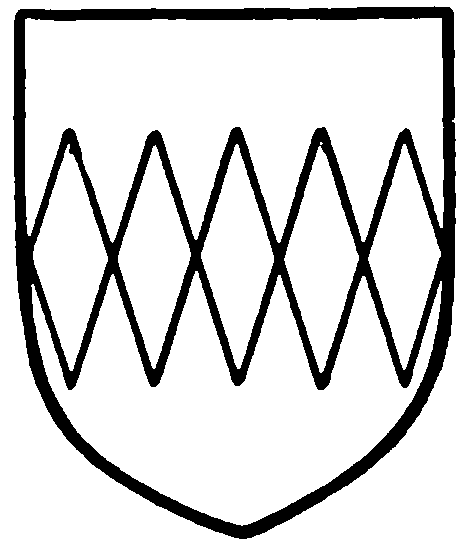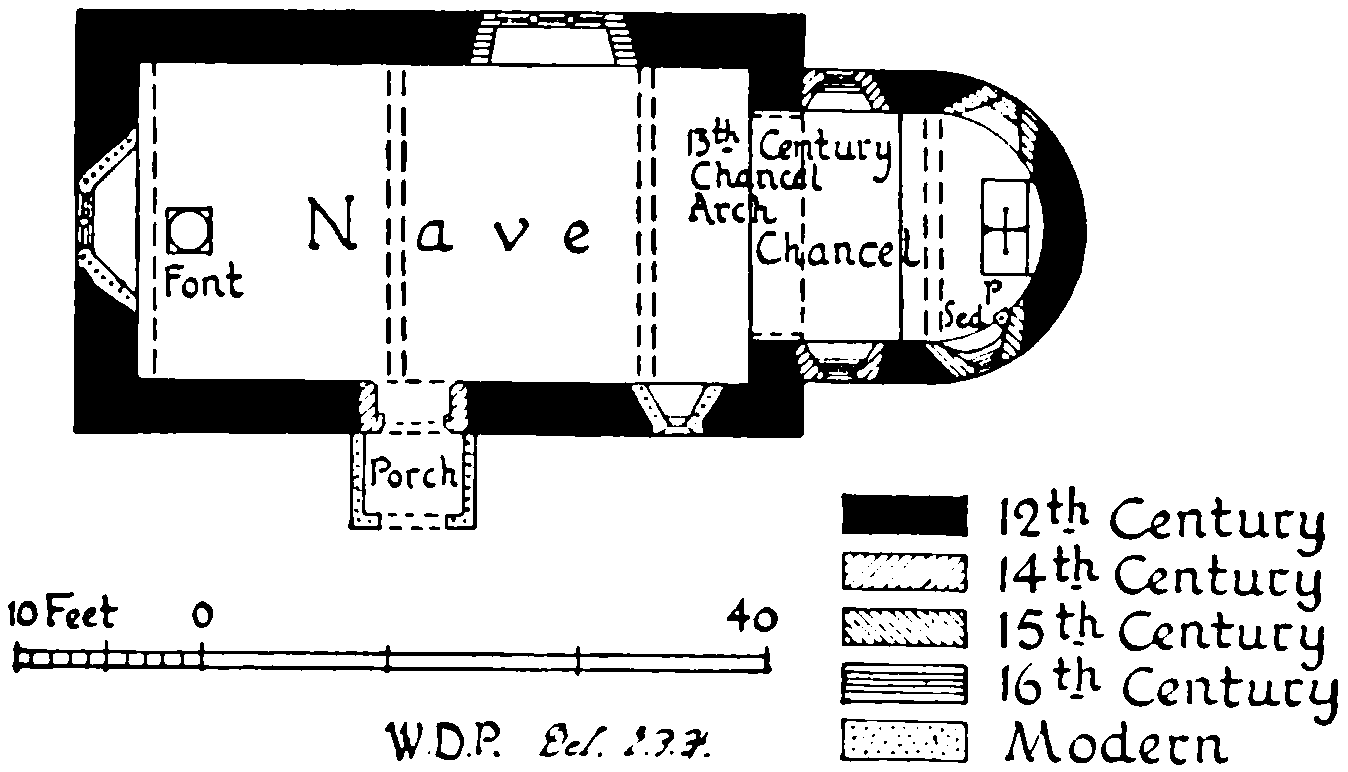A History of the County of Sussex: Volume 4, the Rape of Chichester. Originally published by Victoria County History, London, 1953.
This free content was digitised by double rekeying. All rights reserved.
'Up Waltham', in A History of the County of Sussex: Volume 4, the Rape of Chichester, ed. L F Salzman (London, 1953), British History Online https://www.british-history.ac.uk/vch/sussex/vol4/pp174-175 [accessed 1 May 2025].
'Up Waltham', in A History of the County of Sussex: Volume 4, the Rape of Chichester. Edited by L F Salzman (London, 1953), British History Online, accessed May 1, 2025, https://www.british-history.ac.uk/vch/sussex/vol4/pp174-175.
"Up Waltham". A History of the County of Sussex: Volume 4, the Rape of Chichester. Ed. L F Salzman (London, 1953), British History Online. Web. 1 May 2025. https://www.british-history.ac.uk/vch/sussex/vol4/pp174-175.
In this section
UP WALTHAM
The parish, which is hilly, ranging in elevation from little over 300 ft. in the extreme south to 800 ft. on the crest of the steep North Down, contains 1,275 acres. It consists of a main block, about 1 mile each way, with a narrow projection, less than ¼ mile wide, running southwards from its south-west angle through Eartham Wood for ¾ mile. Down this a road runs to join Stane Street; northwards the road continues to Duncton and Petworth, passing just east of the church.
Church Farm (now tenements known as Church Cottages), west of the church, is a long building facing east. At the north end a cross-wing about 18 ft. wide and 25 ft. long (east to west) projects in front. This part is built of ancient flint rubble with ashlar stone angle-dressings and is of 14th- or 15th-century origin. At the west end of the south wall internally is a stone doorway with chamfered jambs and a segmental-pointed head. About 22 ft. of the main block south of it is of similar masonry; but it preserves no other original features and finishes at the south end with 17th-century brick angle-dressings; it projects very slightly in front of the main front wall. The interior has been altered. The back wall is also of flint work, and there are ashlar dressings next to the cross-wing. The main block was lengthened southwards at two or three different times in the 17th century. First a length of 9 ft. is of flint work with 17th-century brick dressings at a straight joint. A further length of about 12 ft. up to another vertical straight joint is of old brickwork at the base but of 18th-century bricks above: behind this is the great central chimney-stack. The remainder, about 15 ft., is of late-17th-century brickwork with a string-course at the first-floor level; the south end is gabled and of similar bricks, with a corbelled-out projecting chimney-stack in the upper part. Most of the windows and doorways are of the 18th century or later, with brick jambs, &c. In the first 17th-century addition is a wide original window opening to the upper story, but the lower window has been narrowed. A segmental-headed window in the late-17th-century part has been altered to a doorway. At the back is a low widening of flint and brick; the main back wall of the 17th-century part which it covers is of ancient timber-framing. About midway at the back projects a two-storied staircase-wing, the lower walls of flints with 17th-century brick angles and the upper of framing covered with tile-hanging. The stairs, of square winding plan, are ancient.
The central chimney-stack has wide fire-places back to back and a rebated shaft above the tiled roof. Another 17th-century shaft rises above the oldest part. The rooms have chamfered ceiling beams: there is a particularly heavy one in the upper story at the south end of the oldest part, but there are no distinctive features in the roof construction, which is probably of later alteration.
A large barn north-east of the house is of timber-framing covered with weather-boarding, and has a tiled roof.
Littleton Farm, 5/8 mile farther north-east on the same side of the Petworth road, is a house of c. 1600 with rough-casted walls of timber-framing on foundations of stone and chalk. The lower story of the north-east end is of flint rubble, the upper tile-hung. The central chimney-stack had wide fire-places, now altered, and above the tiled roof the shaft is of cross-plan. The rooms have chamfered ceiling-beams. The framing shows in the original back wall, which is now covered by later additions behind.
South-west of the house is a barn of four bays with aisles. It has massive posts, braced tie-beams, and braced side-framing to the aisles. The outer walls are of flint rubble; the roof is tiled.
MANOR
In the Domesday Survey there are two entries relating to [UP] WALTHAM. The first is of an estate of 6 hides, reduced to 4 because the earl had taken 2 hides into his park. This had been held under the Confessor by Godwin a free man; in 1086 Ernald held 2 hides, and the abbey of Troarn the other 2 hides. The second estate had been assessed at 4 hides, but the earl had taken 1 hide into his park; the remaining 3 hides, which had been held by two free men, were now held by Geoffrey. (fn. 1) Earl Roger's park was no doubt Charlton Forest, and it is clear that 11th-century Up Waltham, with its 10 hides, covered more than the present parish, probably extending into East Dean. The various estates held by Ernald came into the hands of the Nevill family, and in 1244 John de Nevill was holding 3 knights' fees in South Stoke, Warningcamp, Graffham, and Waltham. (fn. 2) There is no trace of a manor of Up Waltham in medieval times, but the chief estate in the parish and the advowson of the church came into the hands of the family of Dawtrey (de Alta Ripa) (fn. 3) at some unknown date. John Dawtrey died in 1398, and his widow Alice presented to the church from 1403 till 1410, when her son John was patron. (fn. 4) John's son Andrew was patron in 1440 and 1443, (fn. 5) and William Dawtrey held the advowson in 1573, (fn. 6) when he made a settlement of it and of 20 messuages and land in Up Waltham on the marriage of his son William with Dorothy daughter of Richard Stoneley. (fn. 7) The property descended in the family (fn. 8) and on the death of William Dawtrey without issue in 1758 passed to his sister Sarah who married Edward Luther of Kelvedon Hatch, Essex. (fn. 9) John Luther presented to the church in 1776, (fn. 10) but in the following year sold the estate to George, Earl of Egremont, (fn. 11) from whom it has descended to Lord Leconfield.

Dawtrey. Azure a fesse indented of five points argent.
Geoffrey who held 3 hides in 1086 may be identical with the Geoffrey who held 1 hide in Selsey, (fn. 12) as the estate or manor-farm of LOWER WALTHAM formed with the manor of Bartleys or Barkleys in Selsey the endowment of the prebend of Up Waltham in Chichester Cathedral. (fn. 13) With the exception of the period of the Commonwealth, when it was sold in 1649 to Thomas Juxon and Michael Handroune, this was held by the prebendaries and leased to various persons until about 1840, when it was taken over by the Ecclesiastical Commissioners. (fn. 14)

PARISH CHURCH of ST. MARY now the CHURCH of the ASCENSION, UP WALTHAM
The estate held in 1086 by the abbey of Troarn had been given to the monks by a certain Herluin. (fn. 15) It was confirmed to the abbey by Henry I and passed with Runcton in Northmundham (q.v.) to Bruton Priory, but is lost sight of after the Dissolution.
CHURCH
The church of THE ASCENSION (fn. 16) stands north of the Chichester-Petworth road on the slope of the Downs; it consists of chancel, nave with timber bell-cote, and south porch; it is built of rubble, plastered, except the porch, which is of flint with brick dressings, and is roofed with tile, the sides of the bell-cote being boarded. The chancel and nave are of the early 12th century; the porch is modern but incorporates some bricks of about the 17th century.
The small chancel is apsidal, and has two windows on each side. The eastern pair are each a single light with trefoil head and very depressed rear-arch, perhaps early-15th-century. That on the south side has the inner part of its sill lowered to form sedilia, at the eastern jamb of which is a small piscina, made from a 12th-century capital carved with crude foliage and volutes; this seems originally to have been freestanding, as it is carved on all four sides. The western pair of windows are also single lights with pointed trefoil heads and interior rebates; their sills are lower than those of the eastern pair. The chancel arch is of one order, a pointed arch resting on square responds with very simple imposts; it extends the whole width of the chancel. Like the adjacent windows it is probably 14th-century, but the imposts may have been reused from a former arch. A small plain corbel inserted in the soffit of each side about 7 ft. above groundlevel probably carried the rood-beam. The roof framing consists of a single tie-beam across the chord of the apse, renewed, or cased, in modern times, carrying a king-post braced to a collar purlin; the rafters and collars are ceiled with plaster.
The original 12th-century quoins of the nave are visible at three corners, and probably exist at the south-west, where they are plastered over. In the south wall is a modern window of one trefoil-headed light, and a plain pointed doorway of one order, perhaps 14th-century. In the north wall is a square-headed three-light window, with uncusped elliptical arches to the lights and no tracery, of the 16th century. The west wall is thicker than the others, perhaps designed to support a stone bell-cote; it contains a modern two-light window. The roof has three tie-beams, irregularly spaced, each carrying a king-post braced to it and to the collar purlin which it supports. The roof is ceiled with plaster in mansard form. The square bell-cote has a pyramidal roof.
The font is tub-shaped on a square base, probably coeval with the church; there is a carved chest in the style of the 17th century but, like the other fittings, modern.
There is one bell.
The communion plate includes a tall silver cup, with an unusually large bowl, of 1675, and a plain paten of the same date and maker. (fn. 17)
The registers of marriages begin in 1762; those of baptisms and burials in 1790.
ADVOWSON
The descent of the advowson has already been traced. The church was valued at £4 6s. 8d. in 1291; (fn. 18) in 1340 it was stated that the rector had a messuage and 10 acres of glebe, worth 6s. 8d.; (fn. 19) and in 1535 the value of the rectory was returned as £6 2s. 9½d. (fn. 20)